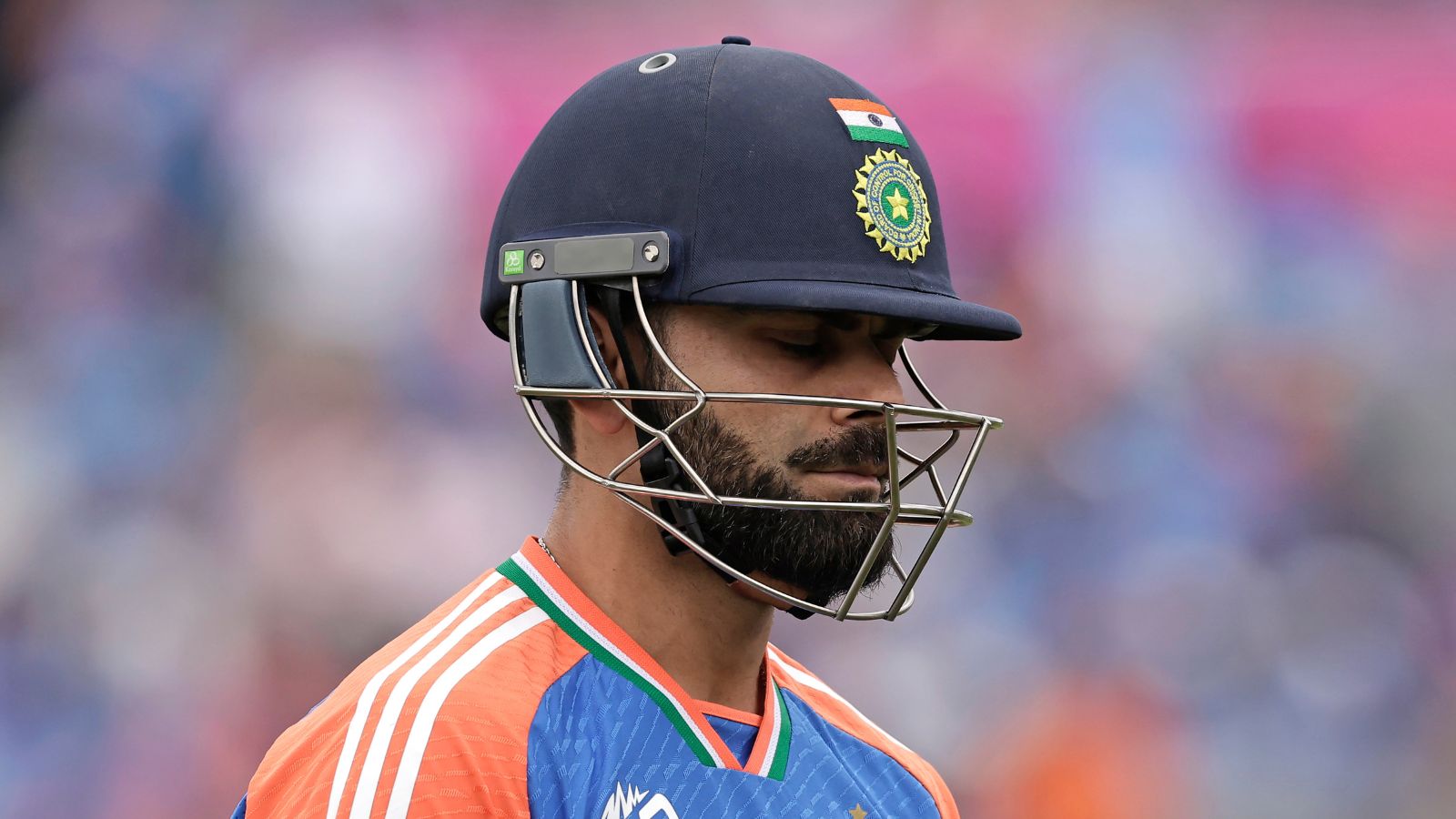Cricket
World T20: What Virat Kohli’s 5 runs from 9 balls tell about India’s batting

Three innings, nine balls, five runs. The numbers tell a sorry tale of Virat Kohli’s World Cup. But if there is a Kohli story that the cold, stone numbers don’t tell, it is how he has been at the heart of India’s brave new philosophy at this T20 World Cup. He has failed, so far, in translating the gung-ho approach into concrete runs, but that is only incidental in the larger scheme of how India is embracing modern ethos without dispensing entirely with the old-guard. Against Afghanistan in the Super Eight game in Barbados on Thursday, the bold punt taken by captain Rohit Sharma and coach Rahul Dravid would be tested.
It really is about how he batted those 9 balls. Seven of them were attacking strokes. Three times he sashayed down the surface; once he shuffled too far across. Twice he looked silly in the way he got out—slashing at a wide one against Pakistan and charging out to swipe versus Ireland. Despite his dismissal, the vibe he exuded was different to any he had in the past in the robes of his country.
All-out attack doesn’t come naturally to Kohli but that’s the game his team wants him to play. Most cricketers grow more averse to risk the older they get, as they come to better understand the stakes they are gambling with, but not Kohli. The methods have worked as recently as the last edition of the IPL, and there is little reason those can’t work in the West Indies, where the pitches wouldn’t be as sinister as those in New York, even though the quality of bowlers would be an upgrade.
All-out attack
Not just Kohli, the pulse of the batting firm still, every Indian batsman has looked to summon strokes straightaway, without fear and inhibitions. The surfaces in New York were not the perfect canvas for their intensive brushstrokes, but still then they did not shrink into their shells. They had the luxury of chasing low scores, against Ireland and USA. Against Pakistan, India were breezing at 89 for 3 in 11.2 overs, an impressive tally on a two-paced surface, before the implosion. So let the low totals not deceive the naysayers into assuming that India’s batsmen have not shed their dated ways.
On the contrary, they have married an ultra-aggressive course of action. Installing Rishabh Pant at No 3 might be the statement move of their new doctrine—and it has fairly worked—but Rohit Sharma too has not veered from early risk-taking, as he had in the 50-over World Cup. He unfurled the sweetest pick-up shot you could see off Shaheen Afridi, just the third ball he faced. You could say the ball was in his hitting arc, but to have the courage to execute the shot against a bowler who has been his nemesis, and on a dicey surface, reflects his mindset more than his muscle memory.


Soon upon resumption after the lengthy rain-delay, he hit the straps with a clipped four off Naseem Shah. Against Ireland, he decelerated midway through his knock but at the start he seemed in a hurry to end the game at the earliest. The first ball he faced was a wide but still he took a ferocious swipe at it. He missed, but that is besides the point. Just the fourth ball, he glided out to Mark Adair, and was beaten by the inward movement. He played and missed repeatedly, thick edges brought him a couple of fours, but he lashed out of the crease and hammered Josh Little over long-on.

Similarly, the promotion of Axar Patel against Pakistan, a move that worked, and the persistence with Shivam Dube, a clean and effortless hitter when in mood, are definite signs of India’s purpose to keep apace with the evolving-by-the-second T20 landscape.The pitches in West Indies, where India play all their Super Eight games, should encourage their methods further.
Easier in West Indies
The tracks in West Indies could get slower and the Indians could be better rewarded. In this decade, India have won and lost three games apiece against West Indies, a team that is the third-best ranked in this format. In those games, India had just one total that was below 150. In 30 off 56 innings here, teams have posted 150-plus totals, a clear sign of boost for batsmen. The bounce is truer and there could be assistance for seamers with the new ball. Not surprisingly, faster men have accounted for 76 percent of the wickets here this tournament.
But bigger hurdles would enter their path. Like a more rounded than ever before Afghanistan. Whereas in their past duels, the narrative has stuck faithfully to the Rashid Khan versus India’s batsmen thread, the arcs are now scattered. The top-order would have to nullify left-arm seamer Fazalhaq Farooqi, the highest wicket-taker of the tournament, his swing and angles more confounding than the familiar trajectories and tics of Rashid Khan.
:
At the batting end, Rahmanullah Gurbaz’s free-swinging ways could potentially bother Jasprit Bumrah and his friends. In every facet, Afghanistan have more depth and variety than their previous iterations, as their largely smooth passage to the Super Eight testifies. Whether India would reproduce their no-holds-barred aggression or dilute the methods, whether it’s a grand scheme or fleeting whim, would be the irresistible theme of the game. And at the heart of the script would be Kohli.


)






